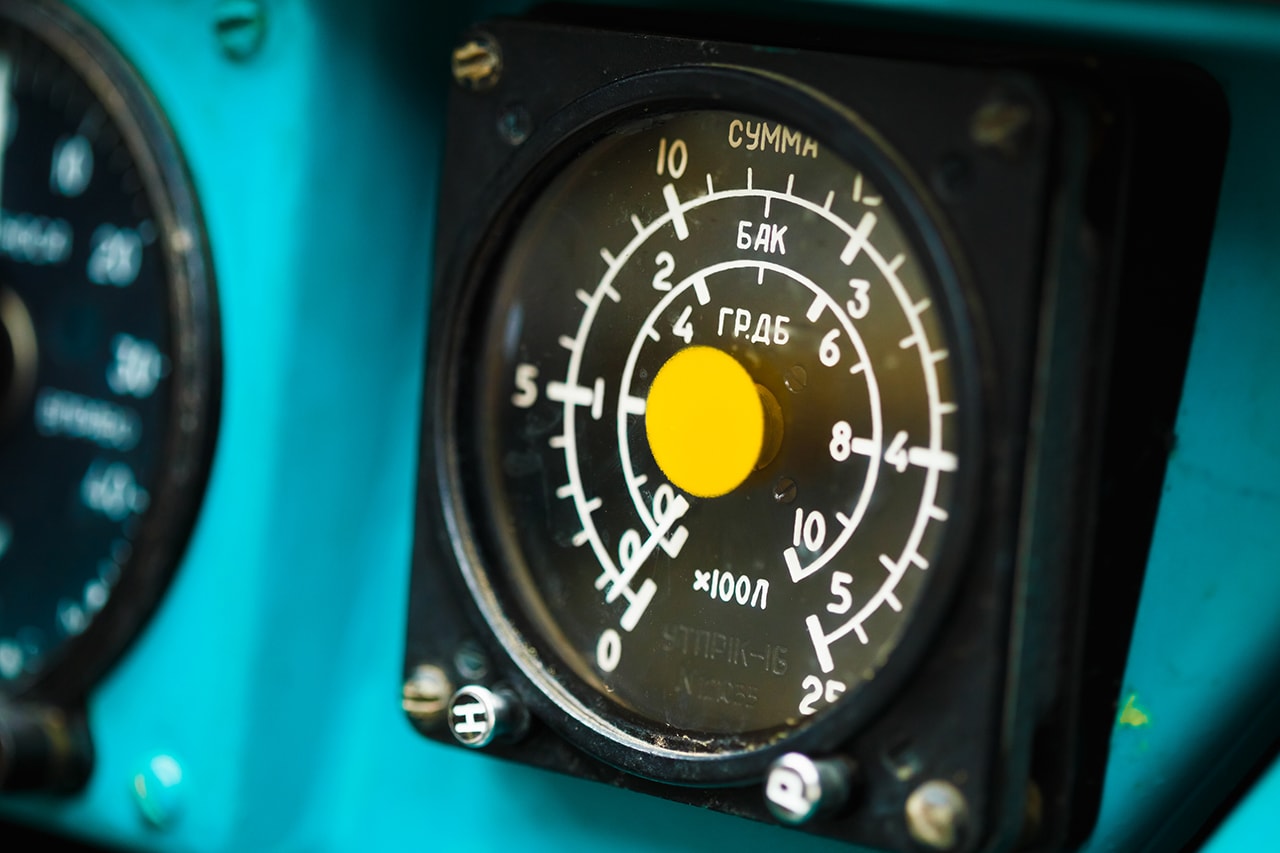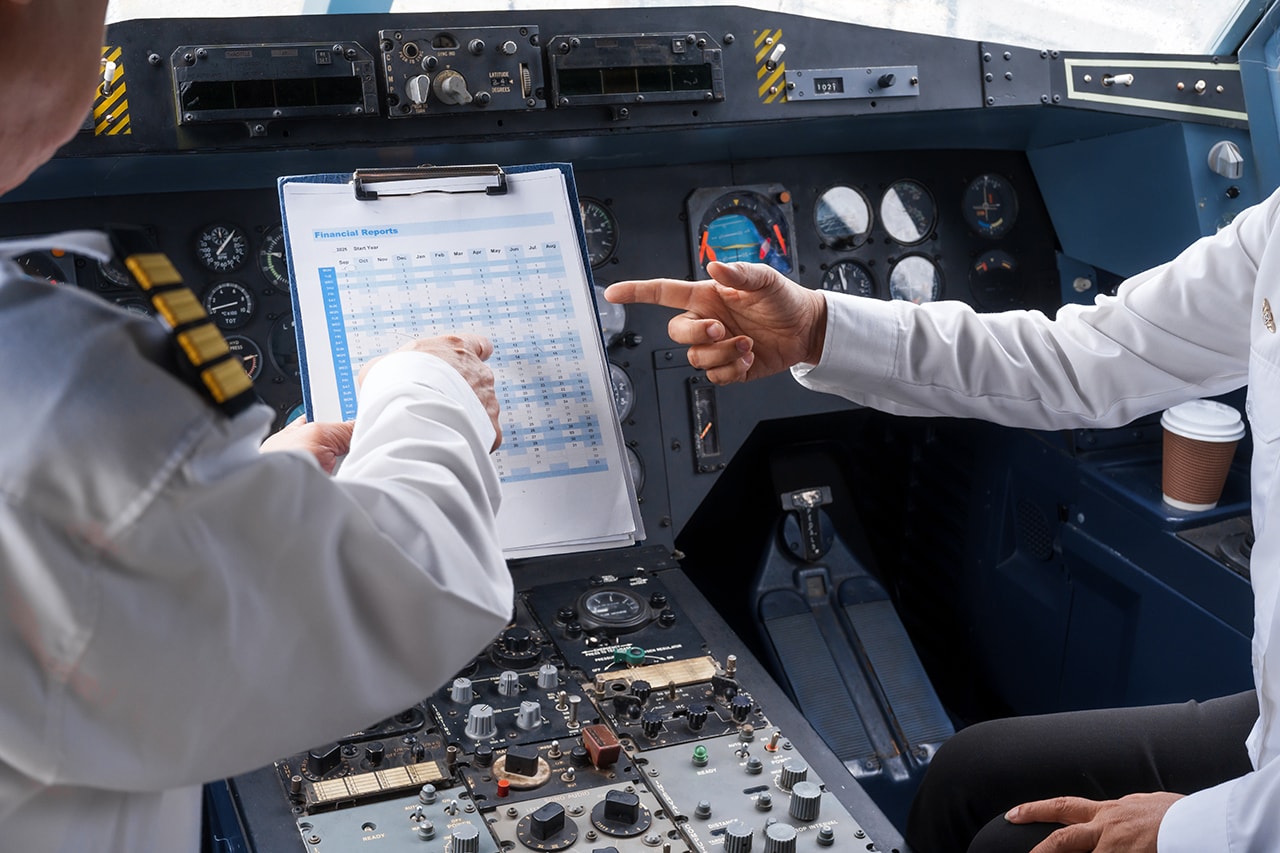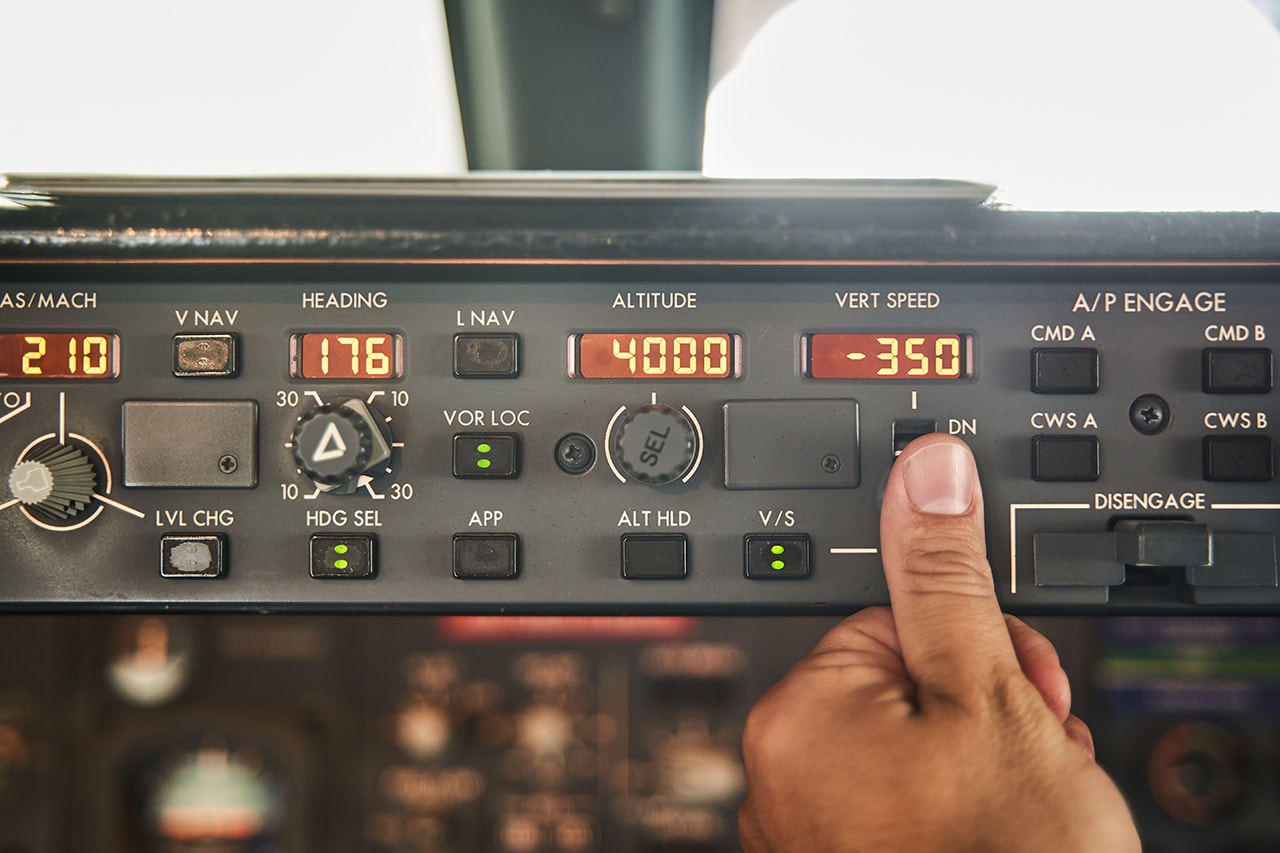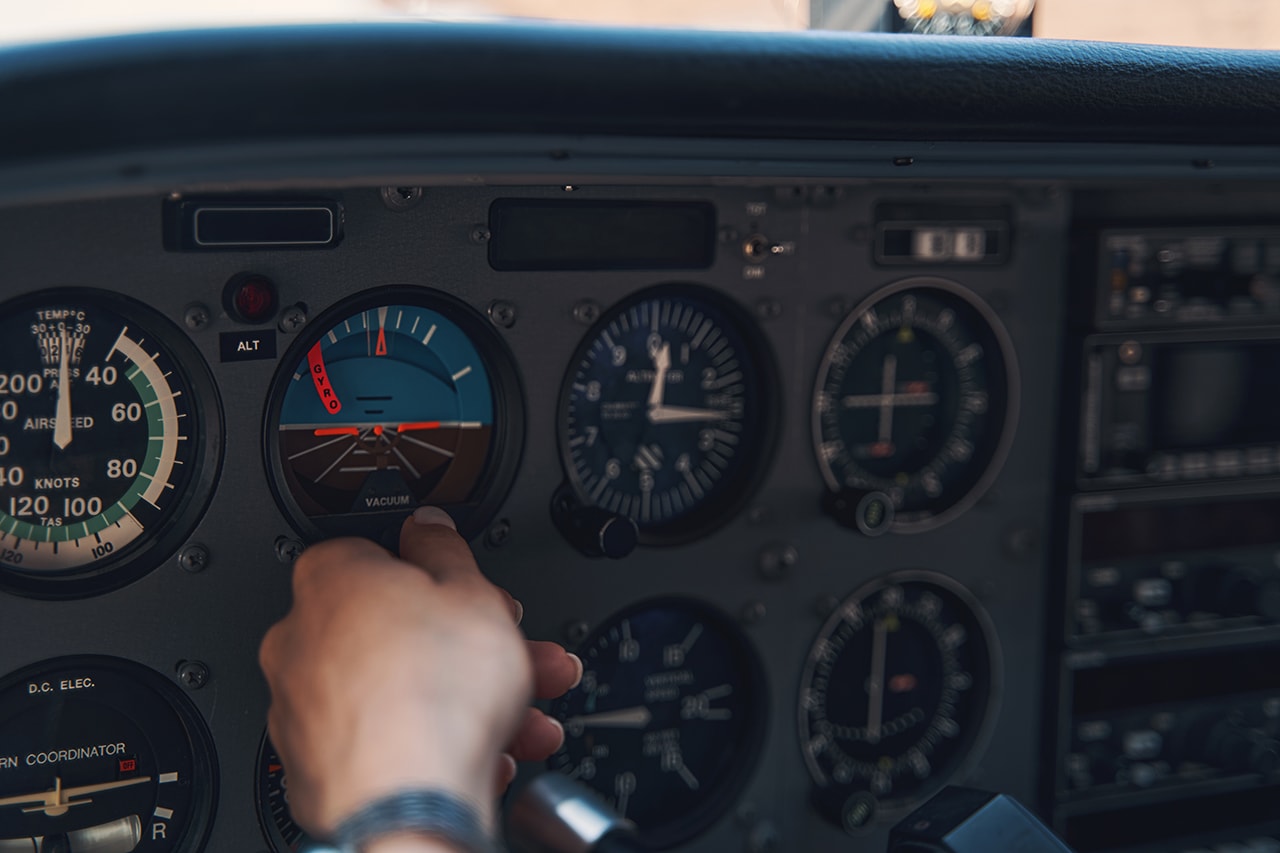6 Flight Instruments Every Pilot Should Know
Sep 16, 2024Introduction to the Six Pack
Six Pack
The six pack, also known as the basic flight instruments, is your primary tools for navigation and safety. They give you the information you need to fly through all conditions and fly well.
By learning these six airspeeds, altitude, climb/descent, attitude, heading, turning/banking you have the knowledge to make decisions in the cockpit, including Minimum Equipment and Instruments for VFR Flight.
This helps individual skills and overall flight safety. By knowing the six pack you can fly with confidence.
By learning these instruments, you can fly better, safer. including understanding the Minimum Equipment and Instruments for VFR Flight.
The six pack flight instruments are the tools of the trade for pilots, to fly safe under all conditions. These instruments give you the data to make decisions in the cockpit.
By learning the six keys airspeed, altitude, climb/descent, attitude, heading, turning/banking—pilots improve their skills and overall flight safety.
Knowing the flight instruments allows you to fly with more confidence, so you can fly any situation. Overall learning the six pack improves individual performance and flying for everyone.
Gyroscopic Instruments
Gyroscopes are key to control and situational awareness in flight, providing information on the aircraft's attitude and movement so you can navigate through any condition. By learning these instruments, you can respond better and improve your skills and overall flight safety. Let’s get into it!
Attitude Indicator (AI)
The attitude indicator is a gyroscopic instrument that shows the aircraft’s orientation to the Earth’s horizon so you can see your flight attitude. It shows two main movements: pitch (nose up or down) and bank or roll (left or right).
By using the attitude indicator, you can control the aircraft precisely in difficult flying. It’s a reliable guide for stable flight and overall safety in the cockpit.
Also known as an artificial horizon it’s powered by a directional gyro. It helps you make the right decisions and fly well.
Heading Indicator (HI)

The heading indicator is a gyroscopic instrument that shows the aircraft’s direction to magnetic north. It’s critical for safe and accurate flying. In more advanced aircraft, the heading indicator is often replaced by the Horizontal Situation Indicator (HSI), which combines navigation information from multiple sources to enhance situational awareness.
One of the best things about the heading indicator is its stability during flight maneuvers. It’s reliable and not affected by most pitch and bank changes so you can keep track of your heading even in dynamic flight.
Also known as a directional gyro the heading indicator is key to staying on course. By learning how to use it you’ll increase your flight safety and confidence and fly to your destination with confidence.
Turn Coordinator (TC)
The turn coordinator is a must have instrument that combines two gyroscopic functions to increase safety of flight. It has a turn indicator which gives you feedback on the yaw of the aircraft so you can see your directional changes clearly.
Along with the turn indicator the inclinometer measures the quality of the turn, is it smooth or is there a slip or skid. This is critical to balance and to avoid unsafe maneuvers during flight.
By using the turn coordinator properly, you can control and precision during turns and have a safer flight. Master this instrument and you can fly the aircraft in any condition and improve your overall flying skills and safety.
Pitot-Static Instruments
Airspeed Indicator (ASI)
The Airspeed Indicator (ASI) is a critical flight instrument that measures the aircraft’s airspeed, providing pilots with essential information for safe flight operations. The ASI uses the pitot-static system, which consists of a pitot tube and static ports, to measure the dynamic and static pressure of the air. The pitot tube, typically located on the wing or fuselage, captures the ram air pressure, while the static ports, usually found on the side of the fuselage, provide the static pressure.
The ASI displays the aircraft’s airspeed in knots or miles per hour, with a needle pointing to the current indicated airspeed (IAS). The instrument also features colored markings that indicate various critical speed ranges, such as stall speed, caution speed, and never-exceed speed. These markings are essential for pilots to ensure safe flight operations and avoid exceeding the aircraft’s performance limitations.
In addition to providing airspeed information, the ASI plays a crucial role in determining the aircraft’s performance and efficiency. By monitoring the airspeed, pilots can adjust the aircraft’s pitch and power settings to optimize its performance and achieve the desired flight path. Understanding and effectively using the airspeed indicator is vital for maintaining control and ensuring a safe and efficient flight.
Altimeter Overview

The altimeter is a must have for pilots, it gives you the aircraft’s altitude above mean sea level (AMSL). It measures static air pressure so you are always aware of your altitude throughout the flight.
To get accurate altitude readings you need to set the altimeter to the current local barometric pressure. This is crucial for precision and effectiveness especially when flying in different weather conditions.
As part of the pitot-static system the altimeter draws static pressure from the static port. Being proficient in using this instrument will give you more confidence and enable you to make better decisions, which is key to safe and successful flight.
Vertical Speed Indicator (VSI)
The vertical speed indicator (VSI) serves as an essential tool for pilots, providing vital information on the rate of ascent or descent by tracking static air pressure changes. This allows for an accurate understanding of altitude fluctuations, enhancing flight safety and management.
By delivering real-time feedback, the VSI enables pilots to maintain precise control throughout various flight phases, whether they are climbing, descending, or cruising. This crucial capability ensures safe navigation and overall stability during flight operations.
Known also as a variometer or vertical velocity indicator, the VSI not only aids in navigation but also bolsters pilots' decision-making abilities. Proficiency with this instrument is key to building confidence in flight operations, ultimately contributing to a safer and more effective flying experience for all.
Instrument Interactions and Challenges

How the Instruments Work Together
The six pack flight instruments are integral for pilots, as they collaboratively deliver a comprehensive view of the aircraft's flight status. Each instrument plays a specific role, ensuring that operators can monitor critical variables influencing their journey.
These instruments interact seamlessly, providing precise and dependable data that is crucial for effective decision-making. Pilots rely on the synergy of these tools to enhance situational awareness, ultimately contributing to a safer flying environment.
Mastering the interaction amongst the instruments is vital for successful navigation and flight management. By understanding how these components work together, pilots can confidently operate their aircraft, ensuring not only their safety but that of their passengers as well.
Common Errors and Challenges with the Attitude Indicator
The attitude indicator is a vital tool for pilots and can have errors that affect its performance, precession and drift. These can make it difficult to read an aircraft’s position in flight.
Precession is caused by friction in the gyroscope and the various forces acting on it during turns, acceleration or deceleration. This can cause misleading indications which can affect a pilot’s situational awareness.
Drift is the gyroscope’s natural tendency to slowly change its orientation over time. Recognizing and correcting these issues is key for a pilot so the information is accurate and reliable which ultimately means safer flying.
Common Errors and Challenges with the Altimeter

The altimeter is a critical flight instrument that provides pilots with essential information about the aircraft’s altitude. However, like any instrument, it is not immune to errors and challenges. Here are some common issues that pilots may encounter with the altimeter:
-
Incorrect Barometric Pressure Setting: The altimeter requires the correct barometric pressure setting to provide accurate altitude readings. If the pressure setting is incorrect, the altimeter will display an incorrect altitude, which can lead to navigation errors and safety issues.
-
Static Port Blockage: The static ports are critical for providing the altimeter with accurate static pressure readings. If the static ports become blocked, the altimeter will not function correctly, leading to inaccurate altitude readings.
-
Aneroid Capsule Failure: The aneroid capsules inside the altimeter can fail due to wear and tear or other factors, leading to inaccurate altitude readings.
-
Temperature Effects: Temperature changes can affect the altimeter’s accuracy, particularly at high altitudes. Pilots must be aware of these effects and adjust the altimeter accordingly.
To overcome these challenges, pilots must ensure that the altimeter is properly calibrated and maintained. Regular checks and maintenance can help identify and address any issues before they become critical. By staying vigilant and proactive, pilots can ensure that their altimeter provides accurate and reliable altitude information, contributing to safer and more effective flight operations.
Common Errors and Challenges with the Airspeed Indicator
The Airspeed Indicator (ASI) is a critical flight instrument that provides pilots with essential information about the aircraft’s airspeed. However, like any instrument, it is not immune to errors and challenges. Here are some common issues that pilots may encounter with the ASI:
-
Pitot Tube Blockage: The pitot tube is critical for providing the ASI with accurate ram air pressure readings. If the pitot tube becomes blocked, the ASI will not function correctly, leading to inaccurate airspeed readings.
-
Static Port Blockage: The static ports are critical for providing the ASI with accurate static pressure readings. If the static ports become blocked, the ASI will not function correctly, leading to inaccurate airspeed readings.
-
Instrument Calibration Errors: The ASI must be properly calibrated to provide accurate airspeed readings. Calibration errors can lead to inaccurate readings, which can affect flight safety.
-
Airspeed Indicator Failure: The ASI can fail due to mechanical or electrical issues, leading to inaccurate airspeed readings.
To overcome these challenges, pilots must ensure that the ASI is properly calibrated and maintained. Regular checks and maintenance can help identify and address any issues before they become critical. Additionally, pilots must be aware of the potential for errors and take steps to verify the accuracy of the ASI readings. By doing so, they can ensure that their airspeed indicator provides reliable information, contributing to safer and more effective flight operations.
Mastering the Six Pack

Mastering the six pack flight instruments is a journey that demands dedication and consistent practice. Pilots are encouraged to invest the time necessary to develop their skills, ensuring they can effectively read and interpret each instrument.
These instruments do not operate in isolation; their interconnected functions are vital for navigating the skies with confidence. Recognizing how to use them together enhances situational awareness and contributes to better decision-making during flight.
In today’s aviation landscape, many modern aircraft are equipped with electronic flight instrument systems that offer advanced information and functionalities. This evolution makes it even more critical for pilots to understand both traditional and modern instruments, ultimately promoting safer and more efficient flying experiences.
Instrument Proficiency
Proficiency with the six instrumental tools is essential for every pilot's success. Mastery of these instruments ensures accurate navigation and establishes a robust groundwork for safety during flights.
As pilots develop a stronger command of their instruments, they not only enhance their flying capabilities but also gain the confidence necessary to make sound decisions under pressure.
This increased confidence empowers pilots to manage unexpected situations effectively, contributing to an overall safer and more reliable flying experience.
Situational Awareness
Knowing the 6 pack instruments helps you have situational awareness. By understanding the relationship between airspeed, altitude and vertical speed you can manage the aircraft and make adjustments as needed to fly safe and directed.
Situational awareness goes beyond instrument scanning; it’s also about being able to anticipate changes throughout the flight. Being proactive allows you to respond quickly and fly safely and reliably.
Instrument Training Tips
To master the six pack instruments, you need to train with a combination of simulation and real world flying. This way you can cover all learning styles.
Instrument flying should be part of your regular flight practice to build the muscle memory. Consistency will make you more comfortable with the instruments and overall, better in the cockpit.
Also focusing on specific scenarios that challenge instrument interpretation will make you make quicker and more confident decisions under pressure.
By simulating high pressure situations, you will be better at navigating complexity and that will make flying safer for everyone.
Ground Training

Ground training is key to learning flight instruments as it gives you the foundation knowledge to understand how each instrument works. By doing detailed study sessions on instrument functions, performance specs and malfunctions, you are well prepared for the real-world scenarios you will encounter in flight. This theoretical knowledge not only improves your practical flying skills but also confidence and competence, makes you a well-rounded pilot who can ensure safety and efficiency in the air.
Continuous Improvement
In the world of aviation where things are always changing continuous learning and adapting to new technology is key. Pilots should seek out resources such as workshops, online courses and industry seminars to learn about traditional and advanced flight instruments. Having a lifelong learning mindset not only develops skills but also a safety culture in the aviation community.
Key Points: Master the Flight Instruments
Knowing the 6 flight instruments is key to navigation and safety. Get to know airspeed, altitude, attitude, heading, vertical speed and turn coordinator and you’ll make better decisions and fly with confidence. These instruments work together to give you a complete picture of your aircraft’s performance, so you can fly proactively and safely. Master these and you’ll improve your skills and create a safety culture in the aviation world, so every flight is an adventure and a pleasure for all.
Master the 6 flight instruments—airspeed, altitude, attitude, heading, vertical speed and turn coordinator and you’ll make better decisions and fly with confidence. This knowledge flies proactively and safely. You’ll improve your skills and create a safety culture in aviation, so every flight is safe and fun for all.
